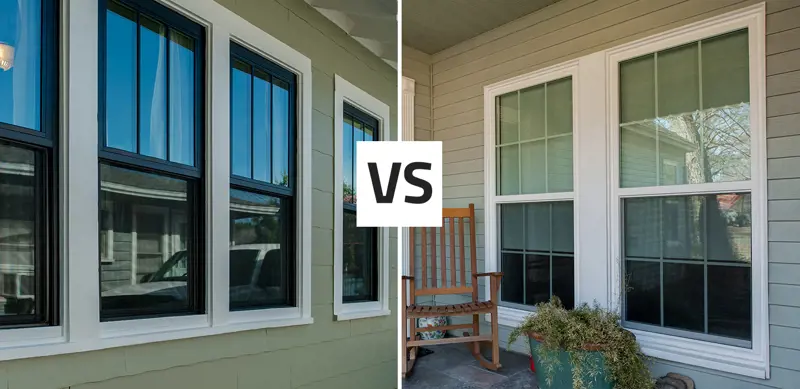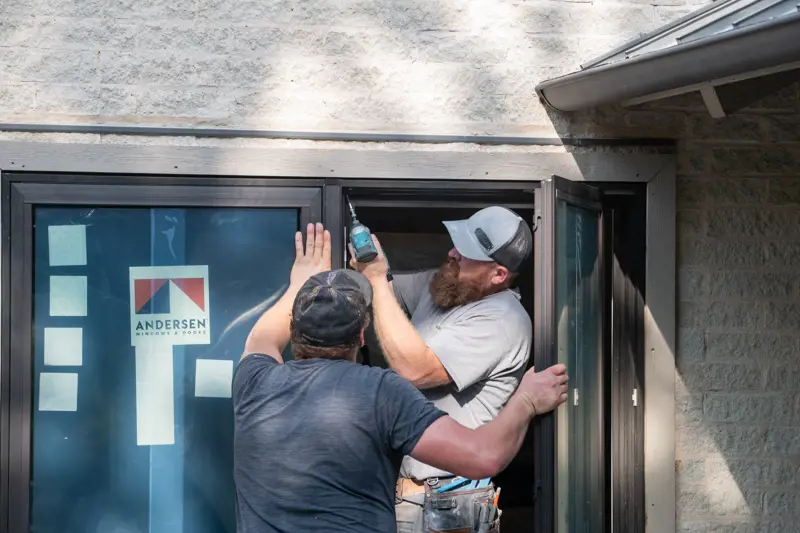
What Is Fibrex Material Made Of?
If you need to replace an old window or build a new construction, it's important to choose a high-quality set of windows. In the search for favorable options, you'll encounter a variety of materials like wood, vinyl, clad frames, and fiberglass. Each material offers different advantages and has a place in the building industry. Fibrex is another option that combines the best of wood and vinyl to create a low-maintenance but insulating window. As an exclusive product of Andersen Windows, Fibrex has developed a strong reputation in a competitive market.
This composite window material is popular in search results because Andersen is one of the most well-known window manufacturers in the country. What is Fibrex and what are its strengths and weaknesses? Should you get this window frame material for your next project? This guide will explain everything you need to know about Fibrex to make a decision you feel good about.
What is Fibrex Material Made of?
Fibrex® Material is exclusive to Andersen Windows and was introduced to the market in 1992. It's made of 40% wood fiber and 60% thermoplastic polymer by weight. Most of these materials are reclaimed from the brand's manufacturing process to be as eco-friendly as possible.
This winning combination blocks thermal transfer almost 700 times better than aluminum. It's also twice as strong as 100% vinyl. As a result, Fibrex keeps interior temperatures more comfortable and stable, which helps to reduce heating and cooling bills. This material is available in Andersen's A-Series, 100-Series, and Renewal by Andersen product lines.
Does Fibrex Age Well?
Yes, Fibrex ages well, which is part of its allure to homeowners and contractors. The unique material of Fibrex makes it incredibly strong and resistant to fading, cracking, warping, and rot. The average lifespan of a Fibrex window is 35 years, which is over a decade longer than standard windows that usually need replacement after 20 years.
Fibrex survives even in extreme climates because it hardly expands or contracts when faced with high and low temperatures. Also, the thermoplastic polymer coating protects the frame to keep its attractive looks for years after other windows have lost their luster.
Is Fibrex a Sustainable Option?
Yes, Fibrex is a sustainable option. In fact, Andersen created this material in response to the growing concern for vinyl windows in landfills. Not only is Fibrex made of reclaimed materials, but it lasts longer than typical windows. The high energy efficiency of this material means less energy spent to keep a home comfortable, which benefits the environment. Also, in the manufacturing process, any waste that is created is recycled and used in the next production cycle.
Pros and Cons of Fibrex
The pros and cons of Fibrex are important to consider before making a commitment to purchase. Here are the benefits and drawbacks of this particular Andersen Product.
Pros of Fibrex
- Last an average 35 of years.
- Resists rot, flame, decay, mold, and fungus.
- Won’t warp, flake, blister, peel, pit, or corrode.
- Not restricted to straight lines, making it an excellent retrofit to older buildings without compromising on functionality.
- Weathertight seals for zero drafts.
- Undergoes an exclusive fabrication process that blends pigment with the Fibrex® material during the manufacturing process, ensuring long-lasting colors.
Cons of Fibrex
- Costs around 3 times more than vinyl windows.
- Cannot be recycled after use.
- Insulation power is in the same ballpark as wood and vinyl, which makes it difficult to justify the higher price to some markets.
How Does Fibrex Compare to Other Composites?
Fibrex is a revolutionary material that offers several advantages over other composites. Unlike typical fiberglass, Fibrex can:
- Be shaped to any window, even curved and custom windows. Other composites are restricted to straight lines.
- Have narrower frames for more glass space.
- Be colorful on their own without fading and don't require painting like other composites.
How Does Fibrex Compare to Vinyl?
Fibrex is twice as strong as vinyl in terms of its compressive strength. However, it has the same thermal transfer and insulating power as vinyl and wood. Overall, this extra strength allows thinner and more attractive frames. This allows more glazing which draws more light indoors.
Both Fibrex and vinyl have colors infused into their frames in the manufacturing process that ensure vibrant colors without the need to paint the frames. Also, both materials are easy to clean and maintain, boasting similar levels of water resistance and abilities to resist pests and fungus. However, Fibrex is made of reclaimed materials and lasts longer than vinyl, which can draw eco-friendly consumers to choose Fibrex over vinyl.
Fibrex Windows
As the only company that sells Fibrex windows, Andersen has a firm spot in a competitive market. It's one of the many materials available that can become a beneficial part of your home. Find out more about Andersen Fibrex windows or other competing materials today.
News, Product Reviews, and Insights
Oops!
We don't currently serve your area but do want to help you plan your project. Try our Build & Price tool to get an idea of window & door costs within DFW. Your area may be higher or lower but at least you'll have some idea of the price.
Thanks for stopping by.






